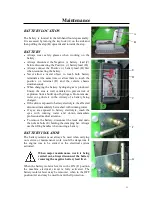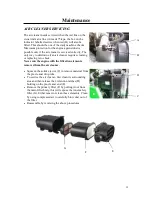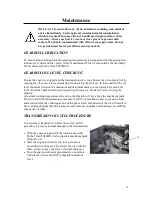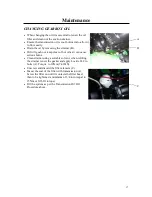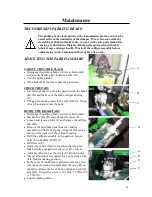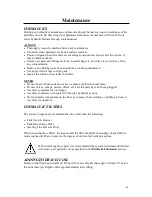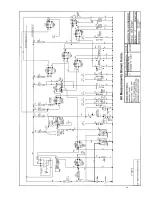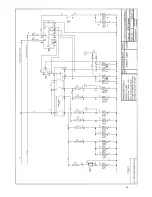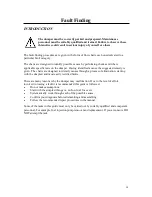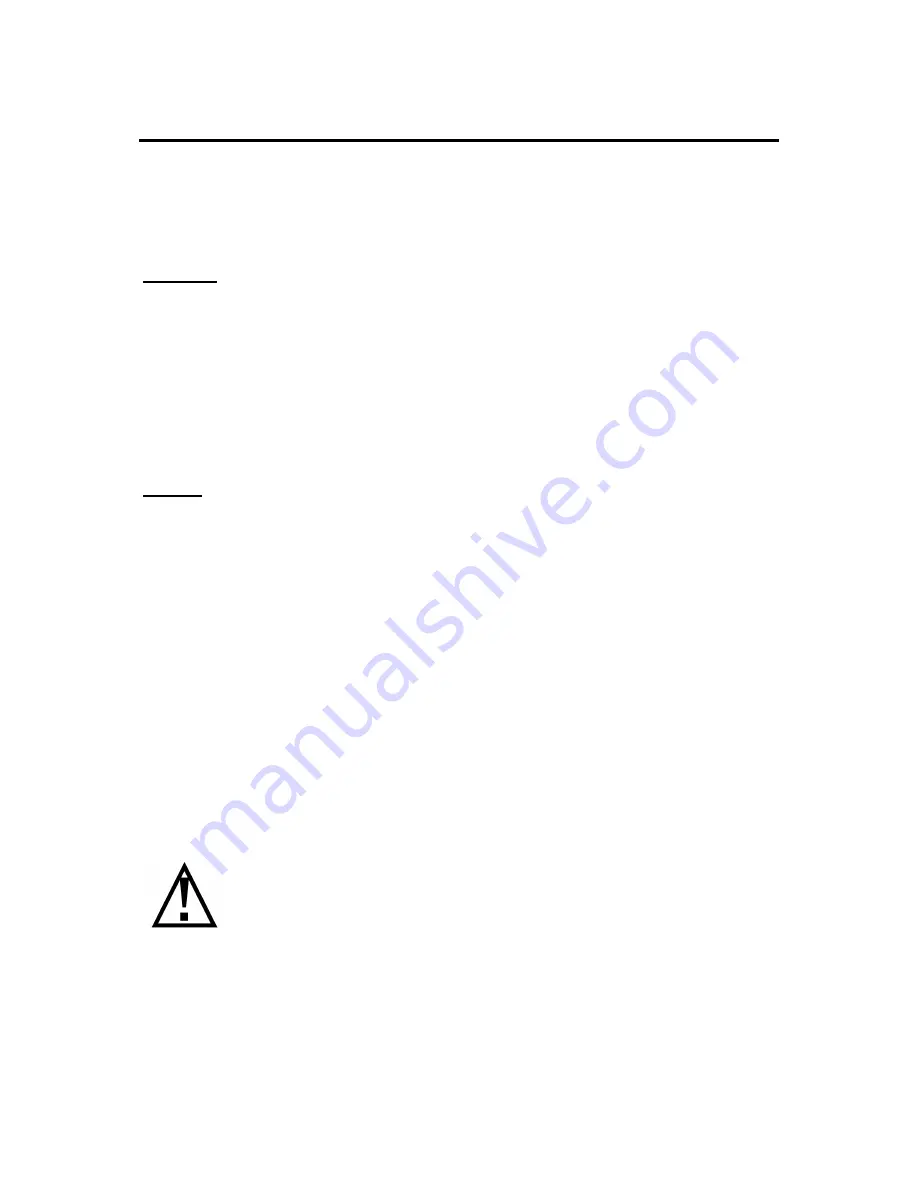
44
Maintenance
HYDRAULICS
During any hydraulic maintenance extreme care should be taken to ensure cleanliness of the
hydraulic circuit. By observing strict hydraulic cleanliness the machine will benefit from
fewer hydraulic failures through contamination.
ALWAYS
•
Thoroughly clean the machine before any maintenance.
•
Use fresh, clean hydraulic oil from a sealed container.
•
Ensure old gasket particles and excess sealing compound etc do not enter the system, if
they do drain them out.
•
Ensure new parts and fittings are kept in sealed bags etc, and they are stored away from
any contamination.
•
Remove any flaking paint from around the area being maintained.
•
Use paper roll not rags to wipe parts
•
Inspect the inside of new tanks for debris.
NEVER
•
Fit new hoses if both ends do not have a plastic cap fitted to seal them.
•
Fit new valves, pumps, motors, filters, etc if all the ports have not been plugged.
•
Use dirty containers for oil storage.
•
Use dirty containers or funnels for filling the hydraulic system.
•
Store hydraulic components on the floor or in areas where welding or grinding is done or
in a dirty environment.
HYDRAULIC FILTERS
The system components are maintenance free other than the following:
•
Tank Suction Strainer
•
Tank Return Line Filter
•
Steering Line Pressure Filter
When renewing these filters, the area around the filter should be thoroughly cleaned before
removing the old filters to prevent the ingress of dirt into the hydraulic system.
When removing these parts it is recommended the system is drained and refilled
with clean, new hydraulic oil as specified in the
Fluids & Lubricants
section.
ADDING HYDRAULIC OIL
Remove tank filler cap and add oil. Do not fill oil level higher than approx 50mm (2”) below
the horizontal top. Replace filler cap immediately after filling.


